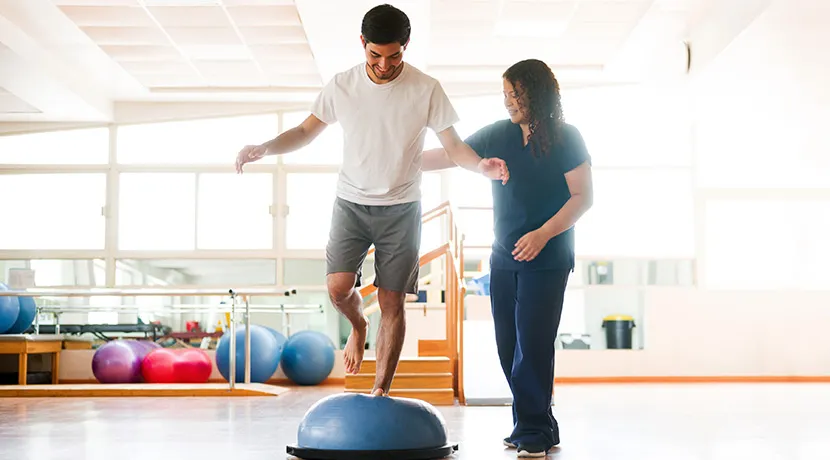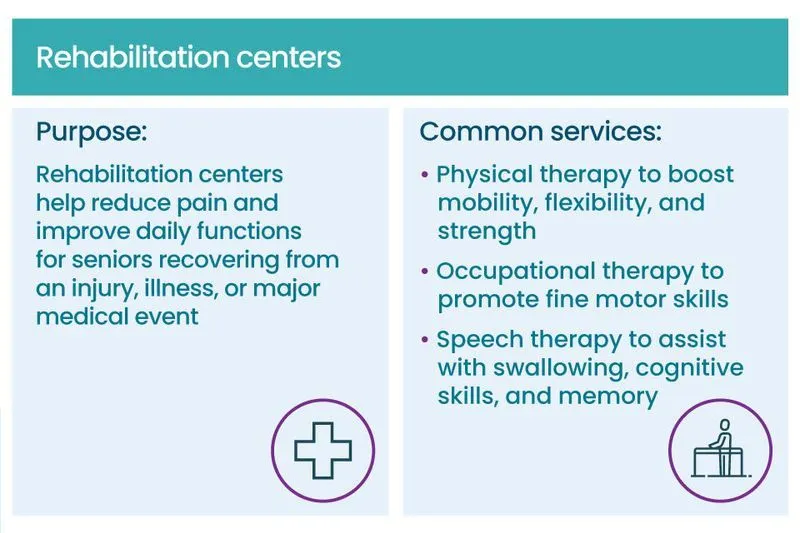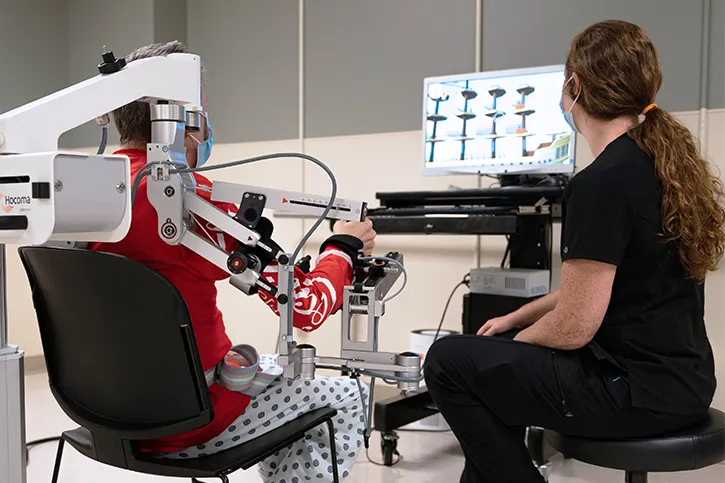
Rehabilitation programs play a crucial role in helping individuals recover from injuries, surgeries, or medical conditions, and regain their physical and mental well-being. Understanding the importance of these programs is essential for promoting overall health and preventing future complications. By incorporating key components such as customized exercise plans, nutritional support, and mental health counselling, rehabilitation programs can effectively address the diverse needs of patients. The integration of technology, collaboration between healthcare professionals, and support from family and caregivers further enhance the success of these programs. However, challenges such as patient compliance, financial constraints, and access to specialized facilities need to be addressed to ensure the effectiveness of rehabilitation programs. By evaluating physical improvements, psychological well-being, and long-term success rates, healthcare providers can optimize these programs to promote long-term lifestyle changes and cater to diverse rehabilitation needs in different communities. Ultimately, the support and involvement of family and caregivers play a crucial role in providing emotional encouragement and assisting with daily activities during the recovery process.

Rehabilitation programs play a crucial role in improving overall health by addressing specific physical, mental, or emotional challenges. These programs are tailored to meet the individual needs of each patient and can include exercises, therapy sessions, and education on injury prevention. By participating in a rehabilitation program, individuals can regain strength, flexibility, and mobility while also reducing pain and discomfort.
Furthermore, rehabilitation programs offer unique benefits for different age groups. For older adults, these programs can help manage chronic conditions such as arthritis or osteoporosis while improving balance and coordination to prevent falls. In contrast, younger individuals may benefit from sports-specific rehabilitation to recover from athletic injuries or surgery. Regardless of age group, participation in a well-designed rehab program promotes long-term health and vitality.
In addition to aiding recovery from current injuries or medical conditions, rehabilitation programs also play an important role in preventing future injuries. Through targeted exercises and education on proper body mechanics and ergonomics, participants learn how to avoid re-injury or exacerbating existing conditions. This proactive approach not only supports ongoing wellness but also reduces the likelihood of needing more intensive medical interventions down the road.

Customized exercise plans play a crucial role in an effective rehabilitation program. Tailoring exercises to fit the individual's specific needs and abilities ensures that progress is made safely and efficiently. This personalized approach also helps to keep patients motivated and engaged in their rehabilitation journey.
Nutritional support is another key component of a successful rehabilitation program. Proper nutrition can help to fuel the body for recovery, promote healing, and prevent complications. Working with a dietitian or nutritionist can ensure that patients are receiving the necessary nutrients to support their rehabilitation goals.
In addition to physical care, mental health counselling is essential for addressing any psychological barriers that may hinder progress during rehabilitation. Providing access to counselling services allows individuals to address emotional challenges, cope with stress, and develop strategies for maintaining positive mental well-being throughout the rehabilitation process.

The use of technology in rehabilitation programs has shown promising results in improving patient outcomes. Virtual therapy sessions, for example, allow patients to receive treatment and guidance from the comfort of their own homes. This not only increases accessibility to care but also helps individuals stay consistent with their rehabilitation exercises.
Wearable fitness trackers have also become an integral part of rehabilitation programs. These devices can monitor a patient's activity levels, heart rate, and even sleep patterns, providing valuable data for healthcare providers to assess progress and make necessary adjustments to the rehabilitation plan.
Telemedicine has further revolutionized the field by enabling remote consultations between patients and healthcare professionals. This is particularly beneficial for individuals living in rural or underserved areas, as it eliminates geographical barriers and allows them to access specialized care without having to travel long distances.
To design an effective rehabilitation program, it is crucial to emphasize the importance of a team approach to patient care. This involves collaboration and communication between various healthcare professionals such as physical therapists, occupational therapists, speech therapists, and other specialists. By working together as a cohesive team, these professionals can ensure that the rehabilitation program is comprehensive and addresses all aspects of the patient's needs.
Effective communication between specialists is also key in the success of a rehabilitation program. Clear and open lines of communication allow for seamless coordination of care, preventing duplication or gaps in treatment. Specialists should regularly update each other on their findings and progress with the patient so that adjustments can be made to the rehabilitation plan as needed.
Additionally, involving primary care physicians in the rehabilitation process is essential. They can provide valuable input based on their knowledge of the patient's medical history and overall health status. Their collaboration with other specialists ensures that all aspects of the patient's well-being are addressed within the rehabilitation program.
One of the primary challenges in implementing rehabilitation programs is ensuring patient compliance and motivation. Many patients may struggle to adhere to the program due to various reasons such as lack of understanding about its importance, fear of pain, or simply feeling demotivated. Addressing this challenge requires a tailored approach that involves educating patients about the benefits of rehabilitation, setting achievable goals, and providing ongoing support and encouragement.
Financial constraints present another significant obstacle in implementing effective rehabilitation programs. Patients may face barriers related to insurance coverage for certain therapies or limitations on resources available for their treatment plan. To overcome this challenge, healthcare providers need to work closely with patients to explore all possible financial assistance options, including government programs or community resources that can help offset the cost of rehabilitation.
Access to specialized facilities also poses a challenge for some individuals seeking rehabilitation services. Not all communities have equal access to advanced equipment or specialized healthcare professionals who are trained in specific rehab therapies. Healthcare organizations and policymakers need to address these disparities by investing in infrastructure development and workforce training, thus ensuring equitable access to quality rehabilitative care across different regions.
To determine the effectiveness of a rehabilitation program, it is essential to measure physical improvements in the participants. This can include tracking changes in strength, flexibility, and mobility throughout the program. By quantifying these physical gains, we can assess whether the program is successfully helping individuals regain functional abilities.
Additionally, evaluating psychological well-being is crucial when determining the success of a rehabilitation program. Assessing factors such as mood, motivation, and self-esteem can provide valuable insight into how participants are coping with their recovery process. A holistic approach that takes into account both physical and mental well-being is key to creating an effective rehabilitation program.
Furthermore, analyzing long-term success rates is imperative in understanding the lasting impact of a rehabilitation program. This involves monitoring participants after they have completed the program to assess if they can maintain their progress and continue leading healthy, fulfilling lives. By tracking long-term outcomes, we can make informed decisions about which aspects of a rehabilitation program contribute most significantly to sustained positive results.
Rehabilitation programs play a crucial role in promoting long-term lifestyle changes by providing education on healthy habits. Participants are educated on the importance of maintaining a balanced diet, regular physical activity, and adequate rest. This knowledge empowers individuals to make informed choices about their health and well-being, leading to sustained improvements in their overall lifestyle.
In addition to education, rehabilitation programs also offer ongoing support for continued exercise. Whether it's through group fitness classes, personalized workout plans, or access to fitness facilities, participants receive the resources needed to build and maintain an active lifestyle. By facilitating regular physical activity, rehab programs help individuals develop healthy habits that contribute to long-term well-being.
Furthermore, strategies for stress management are integrated into rehabilitation programs as part of promoting long-term lifestyle changes. Stress can have detrimental effects on one's health and is often a barrier to adopting healthier habits. By teaching effective stress management techniques such as mindfulness meditation, relaxation exercises, or therapy sessions, rehab programs equip individuals with valuable tools to cope with life's challenges and sustain positive lifestyle changes.
In designing an effective rehabilitation program, it is crucial to consider the diverse needs of different communities. This includes taking into account cultural considerations, such as language barriers and traditional beliefs about healthcare. By understanding and respecting the cultural background of individuals seeking rehabilitation, programs can be tailored to better meet their specific needs.
Accessibility is another key factor in catering to diverse rehabilitation needs. Rehabilitation facilities and programs need to be physically accessible for individuals with disabilities. This may involve providing ramps, elevators, or other accommodations to ensure that everyone has equal access to the services they need for their recovery.
Additionally, a well-designed rehabilitation program should be adaptable for addressing specific medical conditions prevalent within different communities. For instance, certain areas may have higher rates of diabetes or heart disease, requiring tailored interventions and education within the rehabilitation program. By recognizing these unique medical needs and incorporating them into the program design, it becomes more effective in meeting the diverse requirements of various communities.
Family and caregivers play a crucial role in supporting the rehabilitation process. Their emotional encouragement can significantly impact the patient's motivation and determination to overcome challenges. Whether it's through words of support or simply being present, their positive influence can make a difference in the individual's recovery journey.
In addition to emotional support, family members and caregivers also assist with daily activities that may be challenging for the patient during rehabilitation. This could include helping with tasks such as personal care, meal preparation, medication management, or transportation to medical appointments. By providing this practical assistance, they help alleviate some of the stress and physical strain on the patient, allowing them to focus more on their recovery.
Furthermore, understanding the recovery process is essential for family members and caregivers. It enables them to provide appropriate support while also managing expectations realistically. They can become knowledgeable advocates for the patient by learning about their condition, treatment plan, potential setbacks or complications, and ways to facilitate a safe and supportive environment at home.
At Prime Chiro, we understand the importance of finding the best chiropractor near you in Lansvale NSW and surrounding areas. Our team of experienced chiropractors is dedicated to providing top-notch care and consultation to individuals seeking relief from pain and discomfort. Whether you are dealing with back pain, neck pain, headaches, or other musculoskeletal issues, our personalized approach to chiropractic care can help you achieve optimal wellness. Contact Prime Chiro today to schedule a consultation and take the first step towards a healthier, pain-free life.
The purpose of a rehabilitation program is to help individuals recover from injuries, surgeries, or other medical conditions by improving their physical strength, mobility, and overall function.
A rehabilitation program can benefit individuals of all ages who are experiencing physical limitations or disabilities due to injuries, surgeries, chronic conditions, or neurological disorders.
An effective rehabilitation program typically includes a combination of exercises, therapies, and interventions tailored to the individual's specific needs and goals. It may involve strength training, flexibility exercises, balance training, pain management techniques, and functional activities.
The duration of a rehabilitation program can vary depending on the individual's condition, severity of the injury or condition, and their progress during the program. It can range from a few weeks to several months.
Participating in a rehabilitation program can lead to various benefits, including improved physical function, reduced pain, increased independence, enhanced quality of life, and a faster recovery process.
Understanding the importance of effective rehabilitation programs and the key components for success, including technology, collaboration, and evaluation. Addressing challenges and promoting long-term lifestyle changes, while catering to diverse needs and involving family and caregivers for support.